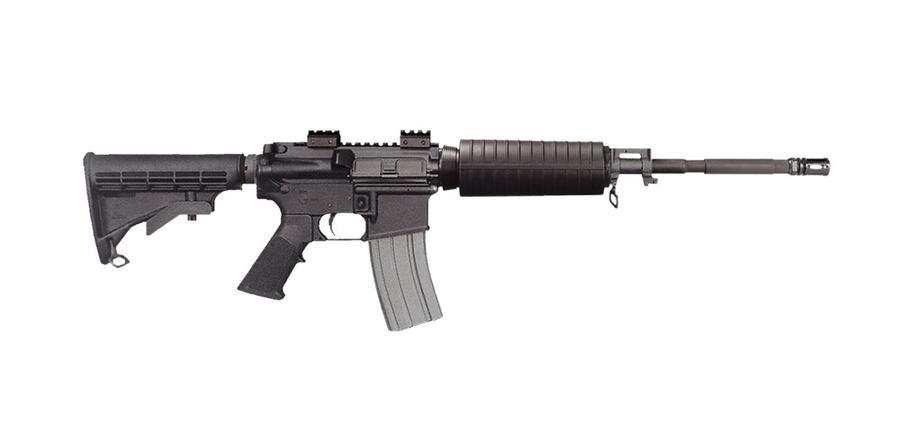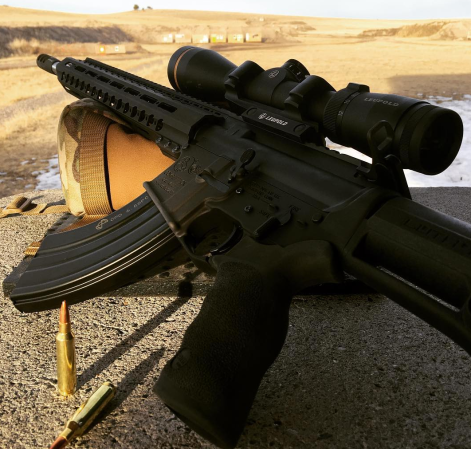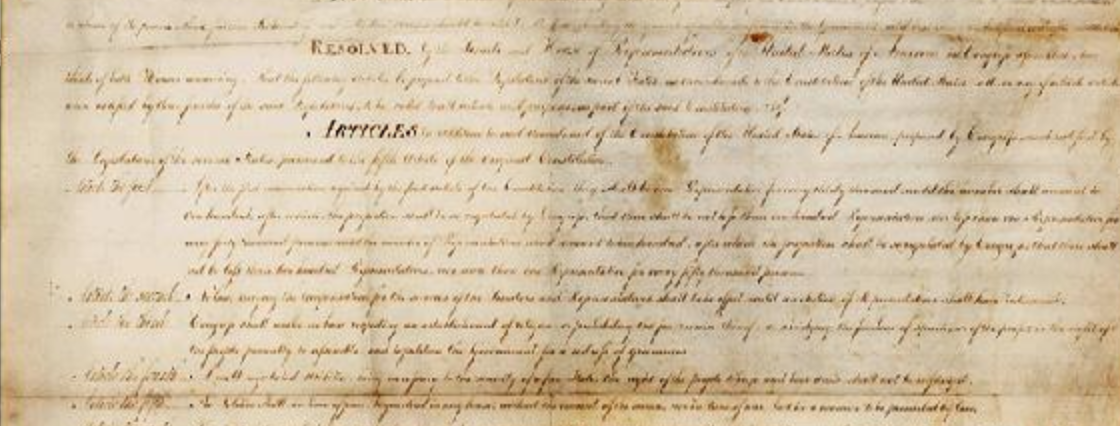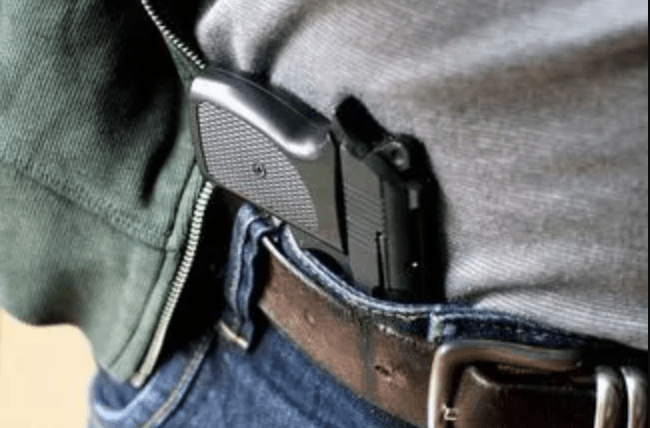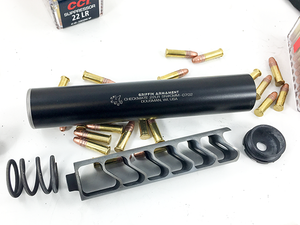We may earn revenue from the products available on this page and participate in affiliate programs. Learn More ›
When President-elect Donald Trump assumes office on Jan. 20, he will inherit the immediate responsibility of nominating a Supreme Court Justice to succeed the late Antonin Scalia. During the next four years, he could appoint at least two more justices with Ruth Bader Ginsburg, 83, and Anthony Kennedy, 80, both liberals, nearing retirement.
Supreme Court decisions are, of course, the most closely followed of legal rulings. They are often the penultimate finales of intricate cases that have been working their way through state and federal courts for years.
Since 2010’s McDonald v. Chicago ruling, however, the Supreme Court has not accepted any significant cases directly related to the Second Amendment. Therefore, once again, 2016’s most interesting and potentially important rulings were issued in federal circuit or district courts, or in state courts.
Which underscores an under-emphasized component of the litigative infrastructure that President Trump will also have an opportunity to address: As of October, 12 of 179 judgeships in the 13 federal circuit courts were vacant and at least 77 — or 11.5 percent — of 673 judgeships in the 93 federal district courts were unfilled.
While the Supreme Court hears about 80 cases a year, the 13 U.S. circuit courts handle more than 30,000 cases annually. Their rulings are often the final word on Constitutional law, or the final step in getting a case before the Supreme Court.
So, not only will Trump have the immediate opportunity to change the dynamics of the Supreme Court, but to steadily stock the bench with judges who could shape the federal judiciary for decades.
Below is a roundup of the 10 most significant — or potentially significant — gun-related court rulings in 2016.
1.) ‘SHALL ISSUE’ SUITS
Peruta ruling, challenges elsewhere, may put ‘may issue’ before Supreme Court
The 9th U.S. Circuit Court of Appeals on Aug. 15 rejected a petition to review its June determination in Peruta vs. San Diego County that there is no Constitutional right to carry concealed weapons in public.
The 9th Circuit Court’s refusal to review its Peruta ruling — as well as pending “may issue” court challenges in Washington D.C. and Baltimore — could set the stage for the next big Second Amendment case to go before the U.S. Supreme Court.
Essentially, it comes down to “shall issue” vs “may issue.” California law allows county/municipal officials to require applicants demonstrate “good moral character” and “good cause” before they “may” issue a concealed carry permit.
The National Rifle Association (NRA) and California Rifle and Pistol Association (CRPA) argue a bureaucrat or law enforcement official does not have the Constitutional authority to determine when, or if, a citizen “may” exercise a fundamental individual right. If an applicant meets permit criteria, it “shall” be issued.
Peruta has been working its way through the courts since 2014 when a three-judge panel of the 9th Circuit Court sided with “shall” proponents. In June, an en banc panel overturned the 2014 ruling in a 7-4 decision that determined “there is no Second Amendment right for members of the general public to carry concealed firearms in public.”
The en banc ruling did not address the Constitutionality of open carry, leaving it open to potential litigation. Another suit, Nichols v. Brown, filed by California Right To Carry President Charles Nichols, seeks to overturn the open carry ban and the California Gun Free School Zone Act, is expected to go before the 9th Circuit Court in 2017.
The 9th Circuit covers nine Western states. California and Hawaii are the only two states directly affected by the ruling because the circuit’s other seven states do not require permit applicants to cite a “good cause.” There are two related court cases filed in California (Scocca v. Smith and Richards v. Prieto) and one in Hawaii (Baker v. Kealoha).
At least three other federal circuit courts have upheld “may issue” restrictions; the 2nd Circuit in a New York case, the 3rd Circuit in a New Jersey suit and the 4th District in a Maryland case. Several “may issue” challenges have been filed in the D.C. Circuit (Wrenn v. DC and Grace v. DC) and in the U.S. District Court in Baltimore (Maryland Shall Issue et al v. Hogan).
On Sept. 20, the Wrenn and Grace cases appeared before a three-judge panel of the D.C. Circuit. D.C. has “allowed” residents to apply for concealed-carry permits since 2014, after a federal judge tossed out the city’s ban on carrying handguns in public. A ruling is expected in 2017.
On Oct. 5, Maryland Shall Issue, a gun store and local citizens challenged Maryland’s 2013 permit-to-purchase law in U.S. District Court in Baltimore, contending it reduces Constitutional rights to “mere privileges.” The suit, Maryland Shall Issue et al v. Hogan, maintains the state’s handgun licensing process is invasive.
The outcomes in these cases, especially if they differ from the 9th Circuit’s Peruta ruling, could ultimately end up before the U.S. Supreme Court and determine, once-and-for-all, if the “may issue” qualifier is a prior restraint on a citizen’s ability to exercise a Constitutional right.

2.) UPHOLDING THE PLCAA
Judge nixes claim that gun-maker is liable in Sandy Hook massacre
A Connecticut Superior Court in October dismissed a lawsuit filed by families of victims in the 2012 Sandy Hook massacre against Remington Arms, ruling the Protection of Lawful Commerce in Arms Act (PLCAA) shields gun-makers from liability when their products are misused.
On Dec. 1, however, the Connecticut Supreme Court agreed to hear the families’ appeal, meaning federal immunity provisions provided the nation’s firearms industry by the 2005 PLCAA could face its stiffest legal test in 2017.
The suit was filed against Remington because its subsidiary, Bushmaster Firearms, manufactured the AR-15 Adam Lanza used to murder 20 first-graders and six educators in Newtown, Conn. The suit — Soto v. Bushmaster Firearms Int’l, LLC — claims Remington knew the AR-15 is meant for the military and too dangerous to sell to civilians.
The families filed the lawsuit in 2015 seeking to hold Remington liable for the massacre through a claim of “negligent entrustment,” arguing it knowingly markets and sells the AR-15 to a particularly vulnerable group of young men.
In May, Connecticut Superior Court Judge Barbara Bellis ruled the suit could move forward, making it the first to claim a “negligent entrustment” exception to the PLCAA — in this case, by the way Remington markets the AR-15.
The suit claims Remington is as culpable as the distributor or dealer because it sells America’s “most notorious killing machine to the public, despite its association with mounting mass murders of civilians.”
Other defendants include distributor Camfour and Riverview Gun Sales, the retailer that legally sold Lanza’s mother the Bushmaster XM15-E2S used in the shooting.
On Oct. 14, Bellis granted Remington’s motion to strike the suit in a 54-page determination that further litigation ”falls squarely within the broad immunity” provided manufacturers by the PLCAA. That ruling was appealed and, on Dec. 1, the state’s supreme court announced it had “transferred the case to its docket.”
3.) ASSAILING ‘ASSAULT WEAPONS’ BANS
One win, one loss, one case where the jury is still out
“Assault weapon” bans were upheld in Colorado and deemed unconstitutional in the Marianas Islands in 2016. Meanwhile, the jury is still out in a 4th Circuit Court challenge to Maryland’s “assault weapon” ban that could set a 2017 precedent in how future suits are evaluated.
On March 22, the 10th Circuit dismissed Colorado Outfitters Association et al v. Hickenlooper, a lawsuit challenging Colorado’s 2013 gun control laws, ruling the plaintiffs — county sheriffs, gun shops, outfitters, shooting ranges — “lacked standing” to bring the case.
The measures, passed by the Colorado legislature and signed into law by Gov. John Hickenlooper, ban magazines with more than 15 rounds and require universal background checks. After a nine-day trial, state court ruled plaintiffs showed no evidence that their Second Amendment rights were infringed by the laws. The plaintiffs appealed to the U.S. 10th Circuit, which upheld the state court’s ruling in a 33-page opinion.
On Sept. 28, U.S. District Court Chief Justice Ramona Manglona ruled the Commonwealth of the Northern Mariana Islands’ (CNMI) ban on “assault weapons,” caliber limitations on long guns, a $1,000 tax on handgun purchases and registration requirements all violate the U.S. Constitution.
While “the right of armed self-defense, including in public, is subject to traditional limitations,” Manglona wrote, “it is not subject to elimination. (CNMI’s restrictions) completely destroys that right. It is unconstitutional regardless of the level of scrutiny applied, and the Court must strike it down.”
CNMI’s U.S. District Court is as valid a precedent-setting venue as any of the nation’s 93 federal judicial districts. It is within the purview of the 9th U.S. Circuit.
Manglona stressed the ban is “unconstitutional regardless of the level of scrutiny applied.” That is significant, considering a decision on the other side of the world by the 4th U.S. Circuit to apply “strict scrutiny” in a challenge to Maryland’s Firearms Safety Act (FSA) could establish a precedent.
In the wake of the 2012 Sandy Hook shootings, three states — Connecticut, New York, Maryland — passed 2013 laws banning “assault weapons.” In October 2015, the 2nd Circuit upheld the New York and Connecticut bans.
In February, however, a three-judge panel of the 4th Circuit vacated a lower-court ruling upholding the FSA and, in March, agreed to hear the challenge — Kolbe v. Hogan — becoming the first appeals court to apply “strict scrutiny” to firearms regulations. Strict scrutiny is the most stringent form of legal review, requiring government to show a law serves a compelling state interest in the “least restrictive” way possible.
On May 11, the full court heard arguments in Kolbe v. Hogan. A ruling is expected in 2017. Many speculate that this case could ultimately be kicked up to the Supreme Court.
4.) OPEN & SHUT CARRY CASES
D.C. law nixed; Florida ban challenged
In 2016, numerous potentially significant challenges to concealed and open carry laws made headway and there is a possibility for at least two to set precedents in 2017.
On May 17, U.S. District Court Judge Richard Leon ruled in Grace v. D.C. that Washington D.C.’s restrictive gun laws are probably unconstitutional because they essentially ban concealed and open carry by imposing a vague “good reason” requirement for receiving a permit that D.C. police uniformly, yet arbitrarily, deny.
The suit, filed by Matthew Grace and gay gun-rights group Pink Pistols, alleges D.C. gun laws violate the Second Amendment right to bear arms for self-defense, including protecting themselves from non-specific, unexpected threats. It is similar to Peruta v. San Diego, Wrenn v. D.C. and other “may issue” suits but challenges the specific regulatory infrastructure that restricts gun-owners’ rights.
“The enshrinement of constitutional rights necessarily takes certain policy choices off the table,” Leon wrote in a 46-page opinion, quoting the 2008 Supreme Court Heller decision, which confirmed the Constitutional right to keep firearms inside one’s home. Leon said the right applies both inside and outside the home.
In June, Florida’s Supreme Court agreed to hear Florida Carry, Inc.’s appeal in Norman v. Florida, a challenge to the state’s ban on openly carrying firearms in public.
Florida is one of five states that bans open carry of firearms. In 2016, the Florida House approved an open-carry bill but it was blocked in a Senate committee. A 2017 bill has been pre-filed.
Dale Norman, a concealed carry licensee, was arrested in Fort Pierce for violating the ban when “his otherwise lawfully-carried handgun unknowingly became unconcealed.” In 2012, a St. Lucie County judge ruled Norman’s Constitutional arguments were “for someone above the level of this court” to determine, but found state law to be “overbroad” and “vague.”
The county court forwarded its Constitutional questions to Florida’s 4th District Court, which upheld the non-decision, prompting Florida Carry’s appeal. The Florida Supreme Court is expected to rule in 2017.
5.) DRONING ON
Ruling keeps Second Amendment earthbound
Austin Haughwout, the Connecticut teenager who gained Internet notoriety and Federal Aviation Administration scrutiny by posting videos of his homemade armed drones — including one roasting a turkey with an airborne flamethrower — was the center of a legal battle that established how far the government can go in regulating personally owned unmanned aircraft.
How far is that? The sky is the limit.
U.S. District Judge Jeffrey Meyer’s July 6 ruling in Huerta v. Haughwout dismissed Austin and Bret Haughwout’s contention that the FAA had no legal authority to regulate arming their small drones because they aren’t aircraft.
In July 2015, Haughwout posted a YouTube video of a garage-built drone carrying a semi-automatic remotely fired handgun. The video received almost 2 million views within a week, and led to an FAA investigation into whether Haughwout had violated aviation law. In December 2015, he uploaded another video of a self-built drone with a flamethrower roasting a turkey.
In both instances, local police said no municipal or state laws were broken, but the FAA continued to probe. Haughwout and his father refused to comply with an FAA subpoena demanding photographs and video, receipts for the flamethrower, YouTube audience, advertising, monetization information and other evidence to determine if a crime was committed.
The FAA filed suit in District Court to enforce the subpoena. The Haughwouts hired attorney Mario Cerame to represent them. His defense was the FAA is not authorized to regulate drones because they are not technically “aircraft” and, therefore, do not fall under the agency’s purview. Cream argued the FAA’s regulations were so broad, they encompass all airborne objects, including baseballs, pizza dough and children’s propeller-driven toys.
Meyer’s July 6 ruling disagreed. The definition of “aircraft” is part of “intelligible principles” bestowed upon the FAA to regulate efficient use of airspace and safety of people and property on the ground.
This ruling is significant because, as Meyer acknowledged, “The next generation of drones and similar flying contraptions will continue to challenge and shape the law that governs them.”

6.) VIRTUAL PLANS, REAL FIREARMS
3D-Printer Seeks Rehearing On Ruling That Bans Online File-Sharing
On Dec. 5, a Texas-based 3D-printer filed a motion asking the 5th Circuit Court for a rehearing of a September ruling that essentially made it illegal for anyone to share gun-design files online.
In a case that could go on for years and ultimately engender precedent-setting First and Second amendment rulings, Defense Distributed et al v. United States Department of State et al, argues the 5th Circuit disregarded precedents set by the circuit court, as well as the U.S. Supreme Court, in reaching its ruling.
Defense Distributed describes itself as a non-profit that develops and publishes open source gun designs, so-called “wiki weapons.” It has been embroiled in legal tangles with the federal government since the U.S. State Department demanded in 2013 that founder Cody Wilson pull plans for a plastic 3-D printed pistol, the Liberator, from Defense Distributed’s website because it violated the International Traffic in Arms Regulation (ITAR) treaty.
Wilson complied with the request after Liberator blueprints had been downloaded more than 100,000 times. He later sued the federal government, alleging First Amendment infringement. The Second Amendment Foundation eventually joined the suit.
The suit claims ITAR is “clearly an unconstitutional grab against our fundamental liberties.”
In the 5th Circuit’s 3-1 September ruling, justices said the government’s “exceptionally strong interest in national defense and national security outweighs Plaintiffs-Appellants’ very strong constitutional rights … The fact that national security might be permanently harmed while Plaintiffs-Appellants’ constitutional rights might be temporarily harmed strongly supports our conclusion that the district court did not abuse its discretion in weighing the balance in favor of national defense and national security.”
7.) PREEMPTION GIVETH & TAKETH AWAY
Until 10th Amendment prevails, preemption a double-edged sword
With Republicans in control of both legislative chambers in 32 states and the governor’s office in 33 states, preemption — the Constitutional doctrine that federal law takes precedence over state laws, and state law pre-empts local laws — will be a tool used by GOP lawmakers in many states in 2017.
Preemption can be broadly applied to preventing cities and counties from passing local ordinances and regulations that state legislators deem contrary to their designs, such as nullifying local gun ordinances that vary from state gun laws.
The Constitutionality of state preemption has been vigorously debated in Pennsylvania. On June 20, the Pennsylvania Supreme Court unanimously upheld lower court rulings in Leach et al v. Commonwealth that state legislators violated the state’s Constitution when it tacked a state preemption law onto a bill — Act 192 — about copper wire theft in 2014.
The preemption bill allowed citizens and civil right groups, such as the NRA, to sue local governments that tried to regulate guns within their jurisdictions in a more restrictive manner than state law.
A new proposal — Senate Bill 1330 — would expand state preemption over firearms regulations, passed 30-19 in the Senate on Oct. 17 and was referred to the House Judiciary Committee, where it is likely to be introduced in 2017.
Nevertheless, the Pennsylvania Supreme Court ruling is a defeat for preemption and the 10th Amendment and a victory for the 14th Amendment.
Many maintain the 10th Amendment gives states exclusive right to regulate firearms. By this interpretation, all federal gun laws and regulations, beginning with the National Firearms Act of 1934, are unconstitutional. Therefore, states can evoke the 10th Amendment to preempt local governments and also use the 10th Amendment to thwart federal preemption of state gun laws.
Lawmakers in at least 11 states have adopted resolutions and laws nullifying federal gun laws or denying federal entities the resources to enforce them.
At least one state preemption bill — Kentucky BR 84, sponsored by Rep. Kevin Bratcher (R-Louisville) — had been pre-filed for the 2017 legislative session by mid-December.
But, as two Kansas men learned in November, the federal government does not agree with this interpretation of the 10th Amendment and will impose preemption when it sees fit. In 2013, Kansas adopted a 10th Amendment measure — the Second Amendment Protection Act (SAPA) — which says firearms, accessories and ammunition manufactured and kept in Kansas are exempt from federal laws.
On Nov. 14, Shane Cox and Jeremy Kettler, both Chanute, were found guilty in Wichita’s U.S. District Court of violating federal law for manufacturing and marketing sound suppressors. The men claimed they were adhering to state statute that exempted them from federal gun control laws.
Therefore, preemption is a double-edged sword, although divergent court decisions in 2016 could set the stage for ensuing rulings that define its reach, as well as its limits.
8.) MEDICINAL MARIJUANA & GUN RIGHTS
Court upholds ban on gun sales to those with marijuana prescriptions
Recreational marijuana is legal in eight states and the District of Columbia. You can buy and smoke weed without noting it on a background check to purchase a firearms. But, if you live in any of the 28 states where medicinal marijuana is available and have a prescription, the federal government can prohibit you from legally purchasing a firearm.
On Aug. 31, the 9th Circuit Court in a 3-0 vote rejected Wilson v. Lynch, et al, a suit filed by S. Rowan Wilson, a Nevada woman who tried to buy a firearm in 2011 after obtaining a medical marijuana card. The gun store refused to sell her one, citing a federal rule banning firearm sales to illegal drug users.
That’s because, as far as the federal government is concerned, marijuana is still classified as an illegal Schedule I drug — the same as heroin. The Bureau of Alcohol, Tobacco, Firearms and Explosives (BATFE) requires gun sellers to assume a person with a medical marijuana card uses the drug. The Cole memo, which directs the U.S. Justice Department from enforcing federal law in states where recreational and/or medical marijuana is legal, does not apply to gun ownership.
Wilson plans to appeal.
9.) MENTAL HEALTH LIFETIME GUN BAN
Court rules lifetime mental-health gun ban may be unconstitutional
The 996-page 21st Century Cures Act, adopted Nov. 30, lifts restrictions on Medicaid paying for mental health care and establishes a new assistant secretary for mental health in the Department of Health and Human Services. It also includes components extracted from Rep. Tim Murphy’s (R-Pa.) Helping Families in Mental Health Crisis Act, such as due-process protections for gun owners, especially veterans, from having their Second Amendment rights automatically denied for life by virtue of being diagnosed with a mental illness.
The federal law indefinitely banning mental health patients from owning a gun, however, was already under scrutiny. On Sept. 11, the 6th Circuit ruled the Gun Control Act of 1968, which bans anyone “who has been adjudicated as a mental defective or who has been committed to a mental institution” from owning a firearm, could violate the Second Amendment.
The ruling revives a lawsuit — Tyler v. Hillsdale County Sheriff’s Dept. — filed by a Michigan man who failed a background check while attempting to buy a gun in 2011. Clifford C. Tyler was denied the right to purchase a weapon because he had been committed briefly to a mental institution in 1986.
The court ruled there are compelling reasons for prohibiting people currently or recently suffering from mental illness from possessing a gun. But, “none of the government’s evidence squarely answers the key question at the heart of this case: Is it reasonably necessary to forever bar all previously institutionalized persons from owning a firearm?”
Tyler maintains the Gun Control Act of 1968 creates a permanent ban on his Second Amendment rights. Although the director of BATFE is empowered to restore the rights of those who can demonstrate they aren’t a danger to public safety and whose possession of a firearm wouldn’t be “contrary to the public interest,” Congress defunded the review program in the 1990s — and, oh by the way, hasn’t appointed a director since 2006.
